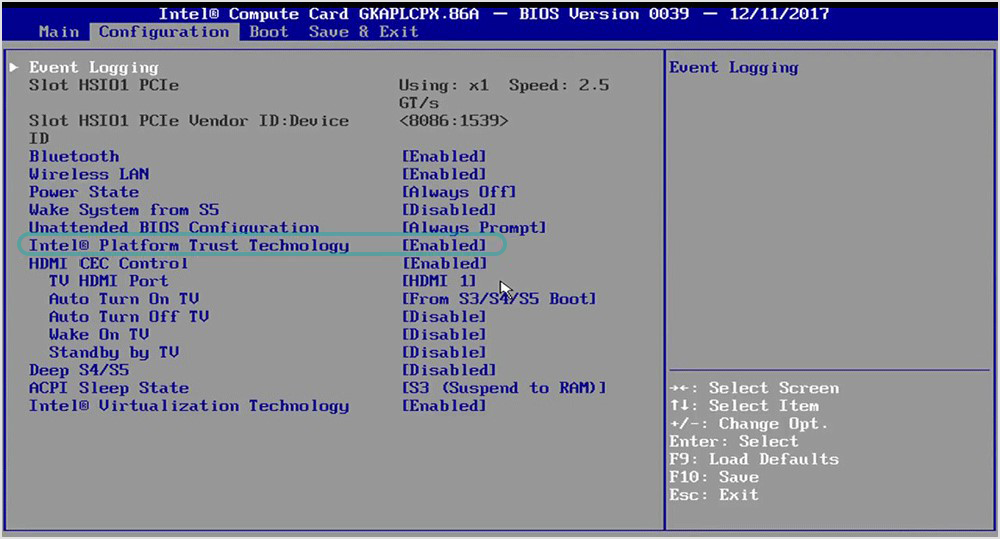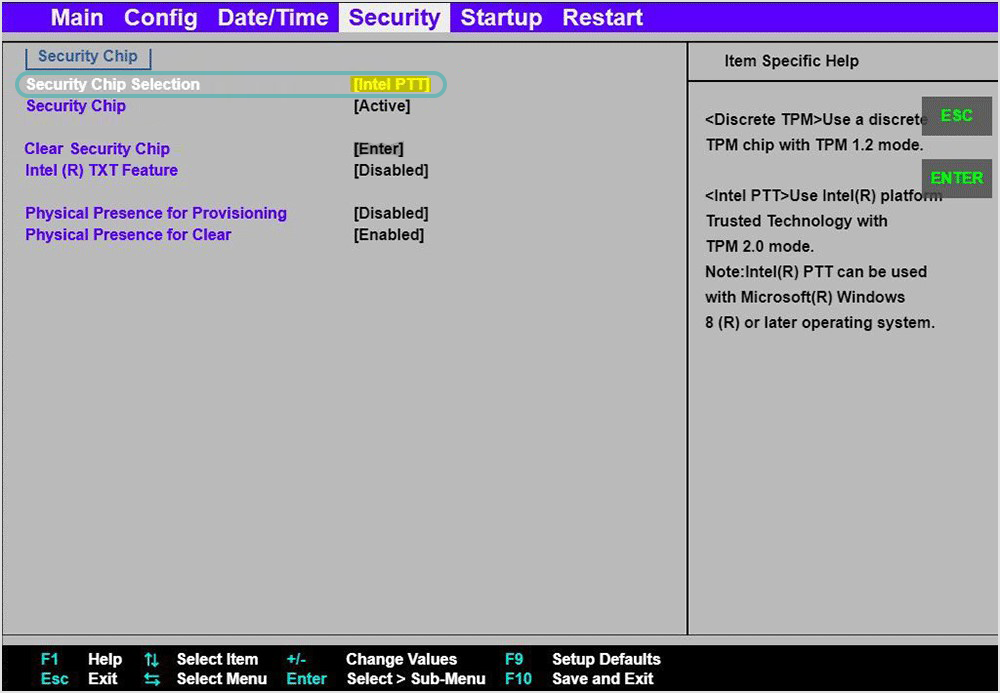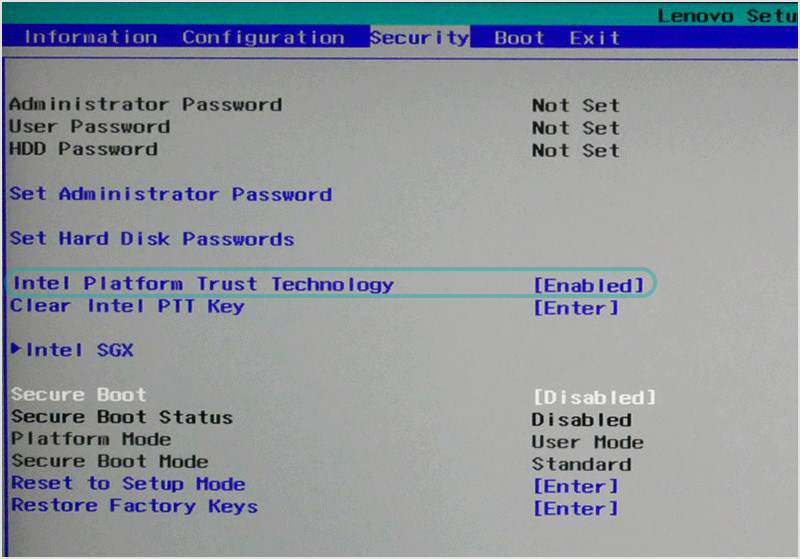Using Full Disk Encryption without password on Windows machines that do not have TPM
This section describes how to enable Intel Platform Trust Technology (Intel PTT) on Windows without TPM.
GravityZone Full Disk Encryption allows security administrators to apply policies that encrypt endpoints without asking for a password from users. This feature is available for Windows machines having a Trusted Platform Module (TPM) chip, version 2.0. However, encrypting volumes without requiring a password is also possible on machines with Intel Platform Trust Technology (Intel PTT).
Intel PTT is an alternative solution that offers the capabilities of discrete TPM 2.0, supporting BitLocker for hard drive encryption and all Microsoft requirements for firmware Trusted Platform Modules (fTPM) 2.0. Intel PTT is available only on certain Windows machines.
Enabling Intel PTT
To encrypt endpoints without asking for a password from users, you must apply a GravityZone encryption policy with the option If Trusted Platform Module (TPM) is active, do not ask for pre-boot password enabled.
By default, this functionality is compatible with machines having a TPM 2.0 chip and UEFI. Encrypting without password also works on machines with Intel PTT, but you must first enable it in BIOS. If you do not enable Intel PTT, the encryption process will continue to require a password.
This is what you must do when encryption without password does not work on certain Windows endpoints:
Verify if the TPM is active on the machine by running the following command: tpm.msc. TPM may appear with ready status even though an actual TPM chip is not present on the machine.
Access BIOS on that machine and go to the section where the Intel PTT setting is located.
Depending on the BIOS manufacturer and version, you may need to either change the Intel PTT status to Enabled or to change the Security Chip setting from Discrete to Intel PTT.
Save the changes and exit BIOS.
Once you have enabled the Intel PTT setting, the encryption process should start without requiring a password.
Different BIOS versions with the Intel PTT setting



Page Menu
- Bitdefender – GravityZone
- Threats Xplorer
- Deleting endpoints
- Using Recovery Manager for encrypted volumes
- Assigning policies
- Creating quick reports
- Running tasks
- Viewing and managing tasks
- Sorting, filtering and searching for endpoints
- Organizing endpoints into Groups
- Viewing endpoint details
- Checking the endpoints status
- Network inventory
- Endpoint types
- Add Mailbox
- Configure Email
- Whitelist Email
- Install security agents – use cases
- Bitdefender Endpoint Security Tools for Linux quick start guide
- AD Connect
- Install Security Server manually
- Install security agents – standard procedure
- Install Security Server through Control Center
- Allow file download blocked by Bitdefender
- Email Security Licensing & Provisioning
- Check my monthly subscription for Bitdefender Security for AWS
- Viewing notifications
- Notification types
- Notifications
- Printing reports
- Emailing reports
- Saving reports
- Taking report-based actions
- Configuring notification settings
- Deleting notifications
- Create reports
- Report types
- Reports
- Executive Summary
- Announcements
- Viewing and managing scheduled reports
- Best practices
- Operation
- Operation
- Configuration
- Reconfigure client
- Repair client
- Restart machine
- Features distribution
- Network discovery
- Container Protection
- Update client
- Security for Storage
- Uninstall client
- eXtended Detection and Response (XDR)
- Install
- Endpoint Risk Analytics (ERA)
- Patch tasks
- Sandbox Analyzer
- Exchange scan
- Security for Exchange
- Deleting policies
- Full Disk Encryption
- Scan
- Email Security
- Scan for IOC
- Risk scan
- Device Control
- Computer policies
- Patch Management
- Renaming policies
- Network Attack Defense
- Changing policy settings
- Content Control
- Configuring profiles
- Firewall
- Assigning policies
- Advanced Anti-Exploit
- Creating policies
- HyperDetect
- Troubleshooting
- Advanced Threat Control
- Patch tasks
- Antimalware
- Credentials Manager
- Introduction
- Best practices